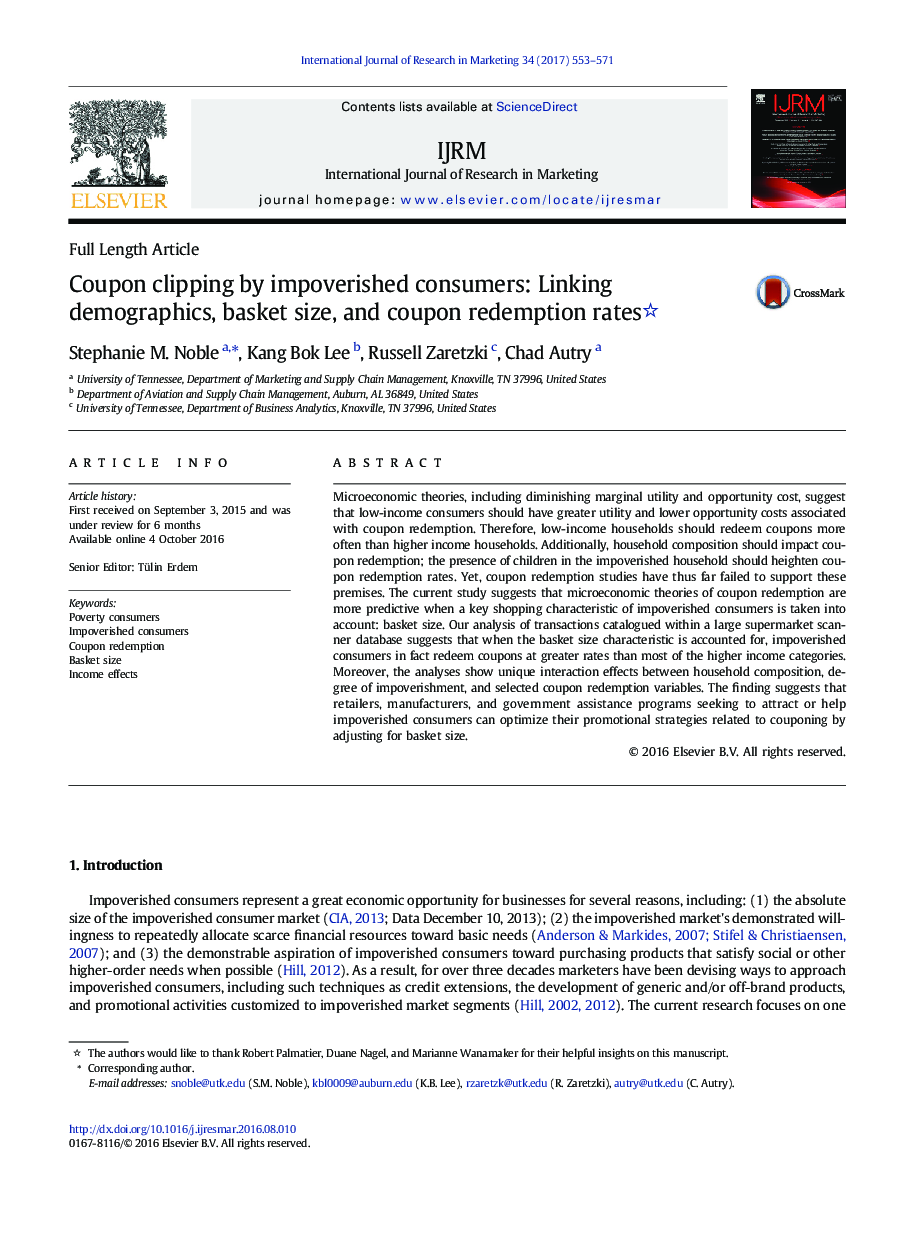| Article ID | Journal | Published Year | Pages | File Type |
|---|---|---|---|---|
| 5033750 | International Journal of Research in Marketing | 2017 | 19 Pages |
Microeconomic theories, including diminishing marginal utility and opportunity cost, suggest that low-income consumers should have greater utility and lower opportunity costs associated with coupon redemption. Therefore, low-income households should redeem coupons more often than higher income households. Additionally, household composition should impact coupon redemption; the presence of children in the impoverished household should heighten coupon redemption rates. Yet, coupon redemption studies have thus far failed to support these premises. The current study suggests that microeconomic theories of coupon redemption are more predictive when a key shopping characteristic of impoverished consumers is taken into account: basket size. Our analysis of transactions catalogued within a large supermarket scanner database suggests that when the basket size characteristic is accounted for, impoverished consumers in fact redeem coupons at greater rates than most of the higher income categories. Moreover, the analyses show unique interaction effects between household composition, degree of impoverishment, and selected coupon redemption variables. The finding suggests that retailers, manufacturers, and government assistance programs seeking to attract or help impoverished consumers can optimize their promotional strategies related to couponing by adjusting for basket size.
